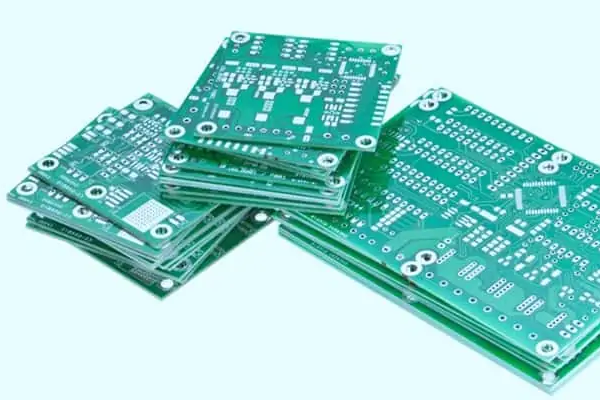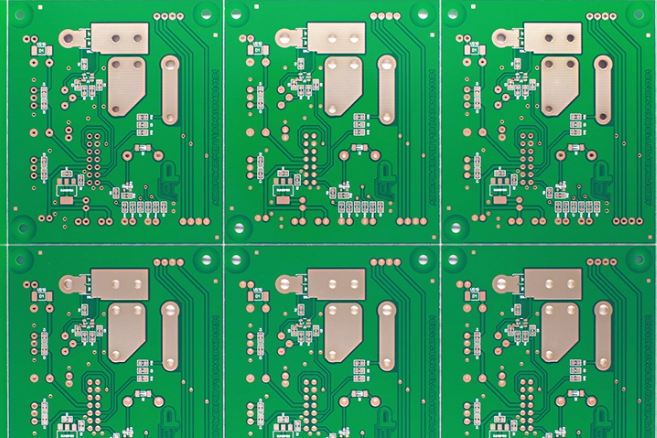In the fast-evolving world of wearable technology, designing fitness trackers that are both functional and comfortable is a top priority. Flexible PCBs (Printed Circuit Boards) are at the heart of this innovation, allowing devices to bend and conform to the human body. If you're wondering how to master flexible PCB design for ergonomic fitness trackers, you've come to the right place. This blog will dive deep into the essentials of flexible PCB fitness tracker design, covering materials, bend radius considerations, and best practices for wearable PCB design. Let's explore how to create cutting-edge wearables that users will love to wear every day.
Why Flexible PCBs Are Key to Fitness Tracker Design
Fitness trackers have become an essential part of modern life, helping users monitor steps, heart rate, sleep patterns, and more. But what makes these devices so comfortable and lightweight? The answer lies in flexible PCB technology. Unlike rigid boards, a flexible PCB fitness tracker design allows the device to curve around the wrist or body, ensuring a snug fit without sacrificing functionality.
Flexible PCBs offer several advantages for wearable tech. They reduce the weight and bulk of the device, improve durability by withstanding repeated bending, and enable innovative form factors. Whether it's a sleek wristband or a patch-style tracker, the ability to adapt to different shapes makes flexible PCBs indispensable in wearable PCB design. In this post, we'll break down the critical aspects of designing these boards, from material selection to managing bend radius.
Understanding Flex PCB Materials for Wearable Tech
Choosing the right flex PCB materials is the foundation of a successful fitness tracker design. These materials need to balance flexibility, durability, and electrical performance. Let's look at the most common materials used in wearable PCB design and why they matter.
Polyimide: The Go-To Material for Flexible PCBs
Polyimide is the most widely used material for flexible PCBs, and for good reason. This high-performance polymer offers excellent thermal stability, withstanding temperatures up to 400°C, and provides superior flexibility. For a flexible PCB fitness tracker, polyimide ensures the board can bend repeatedly without cracking or losing conductivity. Its dielectric constant, typically around 3.4, also supports reliable signal transmission, which is crucial for sensors in wearables.
Polyimide films are often used as the substrate in a polyimide PCB, paired with copper foil for conductive traces. The material's thin profile, often between 12.5 to 50 micrometers, helps keep the device lightweight. When designing for wearables, engineers often select polyimide with a tensile strength of around 165 MPa to ensure durability under stress.
Other Flex PCB Materials to Consider
While polyimide is the standard, other materials like polyester (PET) are sometimes used for cost-sensitive applications. However, PET has lower thermal resistance and flexibility compared to polyimide, making it less ideal for high-performance fitness trackers. For premium devices, engineers may also explore liquid crystal polymer (LCP) films, which offer low moisture absorption and excellent high-frequency performance for advanced sensors.
The choice of material directly impacts the device's reliability and user experience. A well-selected flex PCB material ensures the tracker can handle sweat, temperature changes, and constant movement without failing.
The Importance of Bend Radius in Flexible PCB Design
One of the most critical factors in designing a flexible PCB fitness tracker is the bend radius. The bend radius PCB refers to the minimum radius a board can be bent without damaging the material or traces. Getting this right is essential for creating ergonomic wearables that feel natural on the body while maintaining performance.
What Is Bend Radius and Why Does It Matter?
The bend radius is the measure of how tightly a flexible PCB can curve. If the radius is too small, the board risks cracking, delaminating, or breaking conductive traces, leading to device failure. For fitness trackers, which are often bent repeatedly during use, the bend radius must be carefully calculated to match the device's form factor. A typical minimum bend radius for a single-layer polyimide PCB is around 6 times the thickness of the board. For example, a 0.1 mm thick board should have a minimum bend radius of 0.6 mm.
In wearable PCB design, the bend radius also affects signal integrity. Sharp bends can increase stress on copper traces, raising the risk of micro-cracks that disrupt electrical signals. For a heart rate sensor in a fitness tracker, even a small interruption in signal transmission can lead to inaccurate readings. Engineers often use simulation tools to test bend radius limits and ensure the design can handle real-world use.
Designing for Optimal Bend Radius
To achieve an optimal bend radius PCB, consider the following tips:
- Layer Stacking: Minimize the number of layers in the flex area to reduce thickness and stress. A single or double-layer design is often ideal for tight bends in fitness trackers.
- Trace Layout: Route traces perpendicular to the bend line to minimize stress. Avoid placing vias or components in high-stress bend zones.
- Material Thickness: Use thinner polyimide films to allow for tighter bends without compromising durability.
By prioritizing bend radius in the design phase, you can create fitness trackers that are both comfortable and reliable, ensuring users can wear them all day without issues.
Key Considerations for Wearable PCB Design
Beyond materials and bend radius, wearable PCB design for fitness trackers involves several other factors. These devices must be compact, power-efficient, and durable enough to withstand daily wear and tear. Here are some key considerations to keep in mind.
Compact Layout for Small Form Factors
Fitness trackers are often small, requiring a highly compact PCB layout. In a flexible PCB fitness tracker, space is limited, so engineers must optimize component placement. Surface-mount components with low profiles, such as 0201 or 0402 resistors and capacitors, are commonly used to save space. Additionally, integrating sensors like accelerometers and optical heart rate monitors directly onto the flexible board reduces the need for additional wiring.
Signal integrity is another concern in compact designs. High-frequency signals from Bluetooth or Wi-Fi modules, often operating at 2.4 GHz, can experience interference if traces are too close. Maintaining a controlled impedance, typically around 50 ohms for RF signals, helps ensure reliable data transmission in wearables.
Power Efficiency for Long Battery Life
Battery life is a top concern for fitness tracker users. Flexible PCB designs must prioritize power efficiency by minimizing parasitic capacitance and resistance in traces. Using wider traces for power lines, often 0.2 mm or more, reduces resistance and voltage drops. Additionally, placing power-hungry components like microcontrollers closer to the battery minimizes energy loss.
Some designs also incorporate flexible batteries that conform to the device's shape, further enhancing ergonomics. Ensuring the PCB layout supports efficient power distribution is key to extending battery life to 7-10 days, a common benchmark for premium fitness trackers.
Durability and Environmental Resistance
Fitness trackers are exposed to sweat, moisture, and varying temperatures. A durable wearable PCB design must include protective coatings, such as conformal coatings or encapsulation, to shield components from environmental damage. Polyimide's inherent moisture resistance also helps, but additional measures like IP67 or IP68 ratings for water and dust resistance are often necessary for high-end devices.
Best Practices for Designing Ergonomic Fitness Trackers
Creating an ergonomic fitness tracker goes beyond technical specs—it’s about ensuring the device feels seamless to the user. Here are some best practices for designing with flexible PCBs to achieve both comfort and functionality.
Prioritize User Comfort with Flexible Form Factors
The primary goal of a flexible PCB fitness tracker is to conform to the body’s natural curves. Whether it’s a wristband, chest strap, or clip-on device, the PCB should enable a design that feels lightweight and non-intrusive. This often means integrating the flexible board into a soft, skin-friendly material like silicone, with the PCB bending naturally along the device’s shape.
Balance Flexibility and Structural Integrity
While flexibility is crucial, the device must also maintain structural integrity. Using rigid-flex PCBs, which combine flexible and rigid sections, can be a smart approach. For example, the rigid section can house sensitive components like the microcontroller, while the flexible section wraps around the wrist. This hybrid design ensures durability without sacrificing ergonomics.
Test for Real-World Conditions
Before finalizing a design, rigorous testing is essential. Simulate real-world conditions like repeated bending (up to 10,000 cycles), temperature fluctuations from -20°C to 60°C, and exposure to moisture. Testing helps identify weak points in the bend radius PCB or material selection, ensuring the final product meets user expectations.
Challenges in Flexible PCB Design for Wearables
While flexible PCBs offer incredible potential, they come with unique challenges. Manufacturing a polyimide PCB requires precision to avoid defects like delamination or trace breakage during bending. Additionally, designing for tight bend radii can increase production costs due to the need for specialized materials and processes.
Another challenge is thermal management. Fitness trackers often generate heat from processors or charging circuits, and flexible materials like polyimide have lower thermal conductivity than rigid boards. Engineers must incorporate heat dissipation strategies, such as adding thermal vias or spacing out heat-generating components, to prevent overheating.
Despite these hurdles, advancements in manufacturing and design tools are making it easier to overcome them. With the right expertise, a flexible PCB fitness tracker can be both innovative and cost-effective.
Conclusion: Bending the Rules of Fitness Tracker Design
Mastering flexible PCB design for ergonomic fitness trackers is all about balancing flexibility, durability, and performance. By choosing the right flex PCB materials like polyimide, optimizing the bend radius PCB, and following best practices for wearable PCB design, engineers can create devices that users will love to wear. Whether you're designing a simple step counter or a multi-sensor health monitor, a well-crafted flexible PCB fitness tracker is the key to success.
At ALLPCB, we're committed to supporting your wearable tech projects with high-quality flexible PCB solutions. From material selection to final production, our expertise ensures your fitness trackers are both innovative and reliable. Start bending the rules of design today and create wearables that truly snap into place!








